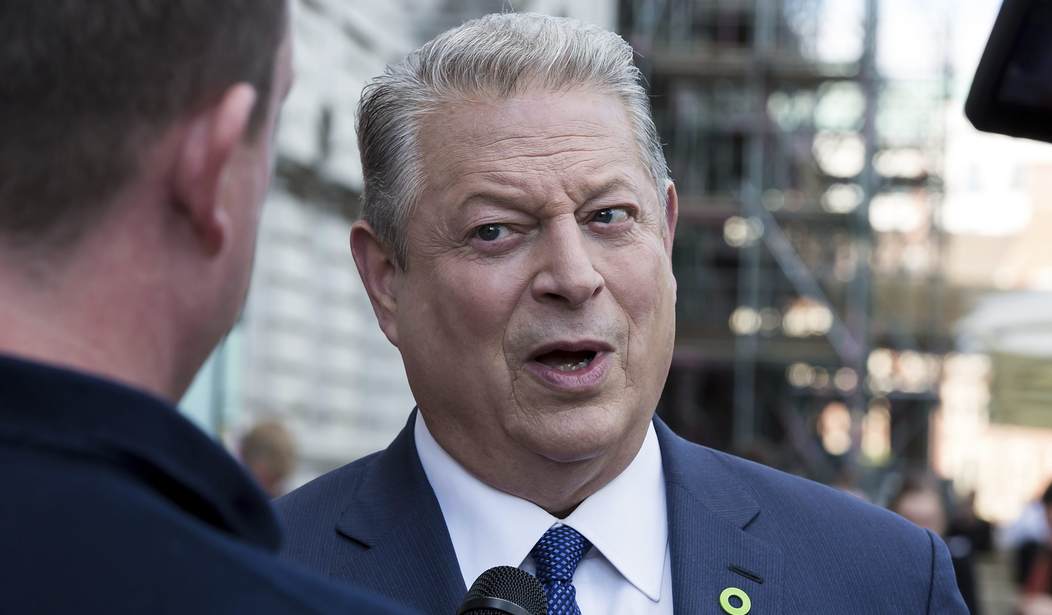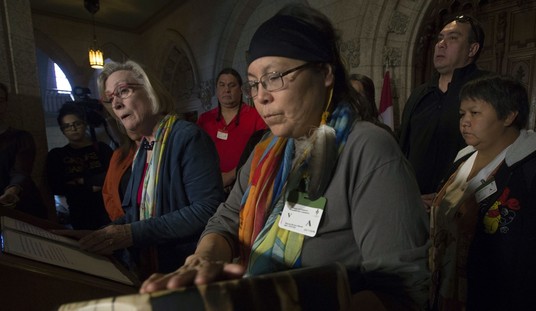It is ironic that former Vice President Al Gore would choose 2017, a year in which we are seeing the fewest extreme weather events in recent times, to release a film focusing on the dangers of increasing extreme weather. If An Inconvenient Sequel: Truth to Power were to reflect reality, it would indeed be an inconvenient sequel to his 2006 film, An Inconvenient Truth, since many of his gloom and doom projections have simply not materialized.
Extreme weather (EW) has always been a natural feature of planet Earth, whether the climate was warming or cooling. However, contrary to the implications of activists like Gore, it is generally during colder times when we have experienced the most EW.
During the Little Ice Age (LIA), a period of cooling lasting from the 14th to the mid-19th century, weather was unusually extreme and variable with severe heat waves, harsh winters, droughts, storm surges, and floods. Conditions were especially bad during the coldest period of the LIA from 1550 to 1700 when — according to Dr. Sallie Baliunas, formerly of the Harvard-Smithsonian Center for Astrophysics — weather was probably at its worst in the last thousand years. The result was crop failure, starvation, disease, death, and social unrest.
Dr. Baliunas described two particularly bad LIA days as follows:
On the afternoon of August 3, 1562, a thunderstorm struck central Europe across a front several hundred kilometers long. After raging for several hours, the storm unleashed a terrific hail that continued until midnight. It destroyed crops, vineyards, birds, and unprotected horses and cows.
On May 24, 1625, a hail storm struck central Germany and dropped one meter of hail. Two days later an arctic front descended onto central Europe and bit hard. Rivers froze. Grape vines exploded. The Rye and barley crops were destroyed. Tree leaves were blackened and fell to the ground and denuded the trees…Probably a frost that severe had not occurred in 500 years.
Though far less serious that the LIA, the Earth was generally cooling between 1945 and 1977, and it was during that time frame that many EW events occurred. For example, the worst single weather disaster in
history occurred on November 12-13, 1970, when a tropical cyclone hit the area of present-day Bangladesh, killing at least a quarter of a million people.
Here is a sample of other EW events during the 1945-1977 cooling period:
October 1952: the driest month ever recorded in conterminous United States.
Summer 1961: India’s most disastrous floods, with hundreds of deaths due to overflowing dams, rivers, etc.
July 1969: Hurricane Camille slammed into U.S. Gulf Coast, killing more than 250 people and causing over one billion dollars in damage.
Summer 1972: Severe drought during Indian summer monsoon season (June-September) leading to sharply reduced rice and other crop harvests. India had to import grain for several years as a consequence.
April 3, 1974: Largest outbreak of tornadoes in the U.S. Midwest in one day. Over 250 people died with property damage in excess of one billion dollars.
So did climate scientists and environmentalists attribute these EW events to global cooling?
Not a chance. While many leading scientists worried about dwindling grain yields worldwide, they concluded, correctly, that it was simply part of natural climate variability.
Yet when EW events occur today, activists like Gore claim EW is increasing and it is due to man-made global warming. This, despite the fact that the data tabulated by the U.S. State Climate Extremes Committee shows that not a single state-wide EW record was set in 2017, 2016, or 2015. One has to go back to the 1930s to find a period when statewide EW records were being set on a regular basis.
Tropical Cyclone activity is now at its lowest level in 40 years worldwide, and no major hurricane (category 3 or above) has made landfall in the U.S. since Hurricane Katrina (category 5) hit in 2005. Hurricane Sandy in 2012 was only a category 1 storm, although its impact was amplified by storm surge augmented by unusually high tides due to the full Moon. Professor Roger Pielke Jr. (University of Colorado, Boulder) refers to the current drought of strong hurricanes making landfall as “a streak of good fortune not seen in the historical record.”
The same holds true in the western Pacific area (China, Korea, etc.) where tropical cyclone activity is also down. The data for floods, droughts, and tornadoes show little to no indication that these events are becoming more severe or frequent, either. It is not surprising that, to quote Pielke, “global disasters are 50% [of] what they were 27 years ago, as a proportion of GDP.”
There is no question, however, that naturally occurring EW will continue to threaten humanity at times in the future. So we must improve our early warning systems to better predict weather extremes and put in place adequate resilience and adaptation measures to handle these events.
Especially important is preparing for dangerous heat waves. The importance of air conditioning cannot be overemphasized.
In the 1995 heat wave in Chicago, about 500 elderly people died because there were no air conditioners in their homes. Yet during the 2011 heat wave, not a single person died from the heat even though dangerous temperatures continued for over a week. The difference? The city opened air conditioned community centers for those who lacked such facilities in their homes.
It is a similar story in Canada. In July 1936, the deadliest heat wave on record struck central Canada and over 1,000 people died (250 in Toronto and vicinity alone) because few houses had air-conditioning. Today, air conditioners are the norm in Toronto and southern Ontario so heat waves of 30-35 degrees C are not a problem.
Contrast this with most of Europe, where even rich nations like Switzerland and Germany still do not have many air conditioned facilities. Instead of concentrating on providing more air-conditioning in community centers and private houses to help reduce heat-related deaths, they focus on reducing carbon dioxide emissions in the vain hope that this will reduce global warming and so lessen EW events.
Yet, after surveying hundreds of peer-reviewed papers in the world’s leading scientific journals, the 2013 Nongovernmental International Panel on Climate Change concluded:
[I]n no case has a convincing relationship been established between warming over the past 100 years and increases in any of these extreme events.
Even the United Nations Intergovernmental Panel on Climate Change asserted in a 2012 report that a relationship between global warming and wildfires, rainfall, storms, hurricanes, and other EW events has not been demonstrated.
The results of Europe’s misguided approach have been tragic. During the 2003 heat wave in western Europe, about 36,000 people, mostly elderly living in non-air-conditioned rooms or houses, died. The same occurred during the 2010 Russian heat wave, when at least 45,000 people died due to heat exhaustion and dehydration, again, largely preventable with proper air conditioning.
To provide the electricity to power the needed expansion in air conditioning across Europe, and indeed much of the world, vast amounts of high quality, inexpensive base-load power will be required. Realistic options include fossil fuels, nuclear, and hydroelectric power. Following Gore’s advice to replace these with weak, unreliable, and expensive alternative energy sources such as wind and solar power because of EW fears makes about as much sense as a ship captain ordering the crew out of the safety of the ship and into lifeboats because a storm is approaching.
Rather than waste money trying to prevent EW events from occurring through CO2 reduction policies, the most cost-effective strategy is for governments to accept such phenomena as naturally driven and plan appropriately. The inconvenient truth is that thousands of people will die needlessly if they do not.









Join the conversation as a VIP Member